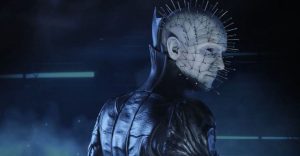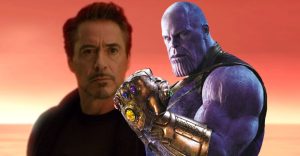Joker: 6 Best Comic Issues of the 1980s

The Joker has been a constant adversary of Batman’s since the caped crusader’s early adventures. The Clown Prince of Crime has always shown sociopathic tendencies with a twisted and sadistic sense of humor. However, it is only in the 1980s when the character got a dark makeover that resulted from the more serious tone the comic book medium had adopted in such seminal works as Alan Moore’s Watchmen and Frank Miller’s Daredevil run.
Alan Moore’s The Killing Joke is a major case in point as it also gave the Joker a (possible) surprisingly moving backstory. Other Batman story arcs like Frank Miller’s The Dark Knight Returns provided more context behind Joker’s homicidal tendencies and his toxic obsession with the Dark Knight of Gotham. These issues fleshed out a villain who had always been one-note before and added additional layers of menace that made the Joker even more disturbing.
6 Batman: The Killing Joke (One-Shot, July 1988)

Alan Moore’s essential one-shot work The Killing Joke raised eyebrows back in the day for its gratuitous violence, particularly involving Barbara Gordon’s injuries at the hands of the Joker. Apart from involving a cat-and-mouse chase between Batman and Joker, the comic also included an origin story revealing the Joker’s past as a failed comedian.
Intended for mature readers, The Killing Joke was a landmark work that added a touch of realism and rawness to the Batman mythos. It shows the real threat that the Joker poses to the point where even the moralistic Batman intends to kill him. The ambiguous conclusion to the story is easily one of the best comic book endings of all time. With an R-rated animated adaptation released a few years back, The Killing Joke still continues to hold relevance.
5 A Death In The Family (Batman #426-429, December 1988- January 1989)

When it comes to shock value, A Death In The Family is as terrifying as The Killing Joke. The basic premise revolves around Joker torturing Jason Todd to the point of apparent death by beating him mercilessly with a crowbar and then entrapping him in an explosion. Instead of a perfect ending, the morbid story ends with Batman failing to save the Robin he was sworn to protect.
A Death In The Family shows readers that even the greatest of superheroes can make mistakes. At the same time, it established the Joker as a truly menacing adversary. In fact, the ultimate ending of the comic was determined via a public poll. Even without any superpowers, the Joker seems to gain the upper hand and proves his heartless villainy. The iconic arc also influenced the future of DC comics as Jason Todd returned as the troubled antihero the Red Hood.
4 Arkham Asylum: A Serious House On Serious Earth (One-Shot, November 1989)

The first Batman story by regular writer Grant Morrison, Arkham Asylum: A Serious House on Serious Earth finds Batman infiltrating the titular psychiatric hospital to stop a riot and find a captive Joker. But in his surreal, hallucinogenic journey, the Dark Knight’s own sanity gets tested. A subplot also includes the origins of the asylum and the supernatural family history behind it.
The comic is filled with several one-on-one dialogues between the two enemies as the Joker plays a game of wits to lure in Batman. Given that it was published in the same year as Tim Burton’s first Batman film, Arkham Asylum seemed like a timely release to announce a darker tone for Batman and the Joker. Further, Morrison’s comic should also be read by fans of the Batman Arkham video game series as the franchise’s first installment, Batman: Arkham Asylum, took some inspiration from A Serious House on Serious Earth.
3 First Laugh (Wonder Woman Vol. 1 #281-283, July-September 1981)

Helena Wayne, who is more famously known as the Huntress, goes head-to-head against the Joker in this short that was featured within three Wonder Woman issues (#281-283). It is set in a post-Batman world with the fate of the Dark Knight unknown. As Helena stops a prison riot, she finds her boyfriend to be “Jokerized” by the Joker’s toxins. Even though Batman does appear briefly, this is mainly Helena’s story.
And yet this special story ends up showing the Joker’s constant fascination with Batman. To combat the Joker, Helena tempts him by hinting at Batman’s return. The Joker is more than happy to oblige hoping to get a glimpse of his lifelong enemy. The story trope of these two enemies being incomplete without each other isn’t new here, but it is one of the significant moments in the ’80s where Joker, instead of Batman, realizes he needs his arch-enemy to exist. This epiphany would haunt both characters well into the 21st century and was a major plot point in 2020’s Joker War.
2 Batman: The Official Comic Adaptation of the Warner Bros. Motion Picture (One-Shot, August 1989)

The decade closed with the release one of Tim Burton’s best films, Batman, who was his Gothic take on the Dark Knight that featured a memorable on-screen appearance by Jack Nicholson as the Joker. The film only seemed timely given how the Joker had fully evolved into a dark and macabre figure in the comics by then. As the comic’s title suggests, this one-shot is a faithful adaptation of Burton’s iconic 1989 film. Incorporating a retro-art style, the comic reinterprets Michael Keaton’s classic Batman costume while capturing the terrifying facial expressions of Jack Nicholson’s Joker.
Be it in the film or the comic, the Joker gets adequate time for the narrative to focus on him. It covers his origin and his menacing transformation into a rogue villain. While it might not offer an entirely new story for diehard Joker fans, this official comic adaptation still makes for an essential collector’s item as it faithfully replicates Nicholson’s masterful performance as the villain, who is at once a tough gangster, lovelorn romantic, and an impulsively homicidal serial killer.
1 The Dark Knight Returns (#1-4, June-December 1986)

Frank Miller’s take on Batman was unique in The Dark Knight Returns as never before was the hero seen in such an aged form. The comic is set in a timeline where both Batman and the Joker have aged way past their prime. At the age of 55, Batman decides to reenter his life of vigilance only to be stopped by Superman who is now serving the government.
While it is a Batman-centric storyline, the Joker has some significant moments to shine. Batman’s return makes him feel alive once again. What follows is an escape from Arkham Asylum, a massacre on a TV show, and a direct duel with Batman. After the latter lets him live, the Joker snaps his own neck in a fit of desperation. Such is the extent to which the Joker’s sadism and self-destruction can go. He is so desperate to make Batman let go of his morals that he is willing to take his own life. This theme of Batman and Joker completing each other was then reinterpreted in many comics in the following decades.
About The Author


















